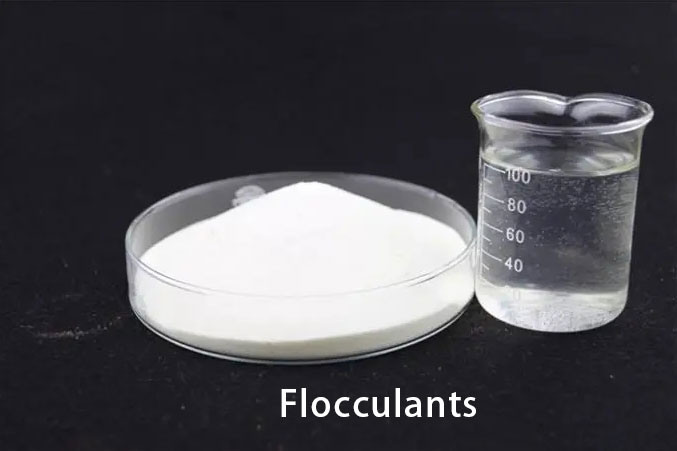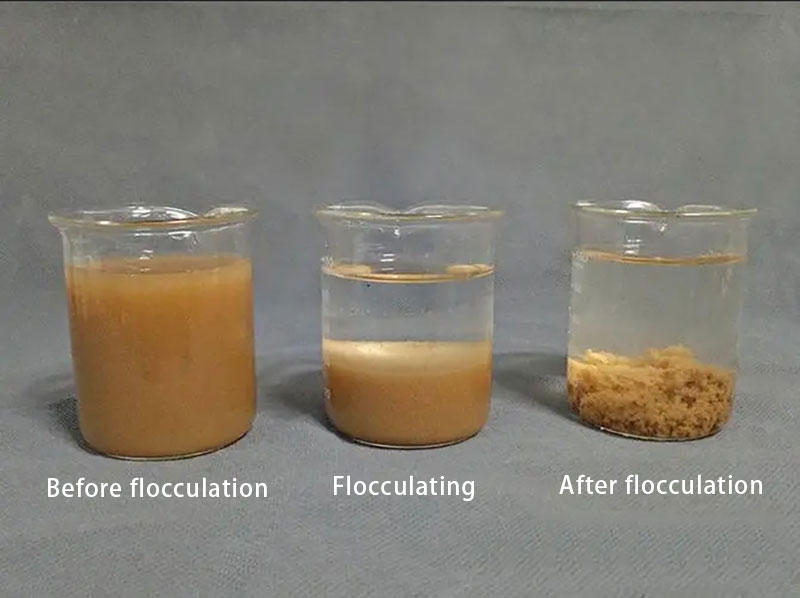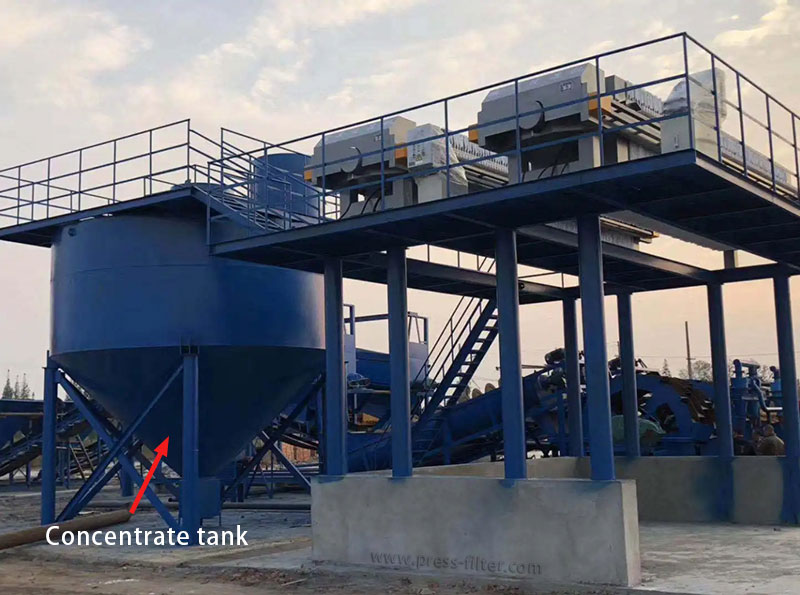Reasons for Filter Press Flocculation without Sedimentation
During the operation of the filter press, flocculation without sedimentation is a common but disturbing phenomenon. It is mainly manifested in that the sludge or suspended matter cannot effectively form flocs after adding flocculants, resulting in the sludge not being fully precipitated and separated in the filter press.
Flocculants are a class of chemicals used to promote the aggregation and sedimentation of suspended particles, thereby achieving solid-liquid separation. They are widely used in water treatment, sludge treatment, industrial wastewater treatment and other fields. Among them, polyacrylamide (PAM) and polyaluminium chloride (PAC) are two common and widely used flocculants.

Flocculation without sedimentation will greatly reduce the treatment efficiency of the filter press, and it will take longer to treat the same amount of sludge. The high content of suspended matter in the filtrate will increase the load on the equipment, which may lead to increased equipment wear and increased repair and maintenance costs. Due to the poor flocculation effect, it may be necessary to increase the amount of flocculant or adopt a more complex treatment process, resulting in increased treatment costs. Therefore, effective measures need to be taken to solve the problem and improve the operation efficiency and treatment effect of the filter press.

Why Does the Filter Press Flocculate Without Sedimentation?
- Improper selection of flocculants: Flocculants are chemicals that play a decisive role in the treatment of sewage by filter presses. If the selected flocculants do not match the properties of the sewage, the flocculation effect will be poor, and the sedimentation rate will be slow. For example, for sewage with high turbidity and high suspended matter content, flocculants with high molecular weight and high charge density should be selected.
- Insufficient flocculant dosage: In some cases, insufficient dosage will also lead to poor flocculation effects despite the selection of suitable flocculants. The dosage of flocculants should be considered comprehensively based on factors such as the nature of the sewage, treatment requirements, and the type of flocculants.
- Poor mixing effect: In the flocculation process, the mixing link is crucial to the flocculation and sedimentation effect. If the mixing is uneven, the flocculant and sewage will not react sufficiently, affecting the flocculation effect. It should be ensured that the mixing equipment has sufficient mixing intensity and time to allow the flocculant to react fully with the sewage.
- Improper reaction conditions: The flocculation reaction needs to be carried out under certain conditions, such as pH value, temperature, reaction time, etc. If these conditions are not effectively controlled, the effects of flocculation and sedimentation will be affected. The optimal reaction conditions should be determined based on the properties of the sewage and the type of flocculant.
- Too high suspended matter concentration: When the suspended matter concentration in sewage is too high, it will increase the resistance of the floccules and reduce the flocculation sedimentation rate.
- Influence of sludge properties: Sludge of different properties has different effects on the flocculation sedimentation effect. For example, sewage with low turbidity, high oil content, and high chroma will affect the flocculation sedimentation effect and require targeted treatment or the selection of special types of flocculants.
- Equipment failure or improper maintenance: Equipment failure or improper maintenance of the filter press may also lead to flocculation without sedimentation. For example, damaged filter cloth, loose plate frame, hydraulic system failure, etc., may affect the normal operation and flocculation effect of the filter press.
- Improper operation or human error: In the actual operation process, the phenomenon of flocculation without sedimentation due to improper operation or human error often occurs. For example, incorrect feed rate control, incorrect dosing ratio adjustment, etc., may affect the flocculation effect.

The Solution to the Problem of Filter Press Flocculation Without Precipitation
- Selecting the right flocculant: For sewage of different properties, choosing a flocculant that matches it is the key.
- Determine the exact amount of flocculant added: Determine the best flocculant dosage through experiments to ensure the ideal flocculation effect.
- Optimize the mixing process: Improve the performance of the mixing equipment, increase the mixing intensity and time, and allow the flocculant to react fully with the sewage.
- Control the reaction conditions: Adjust the pH value, temperature, reaction time, and other reaction conditions according to the actual situation to achieve the best flocculation and precipitation effect.
- Reduce the suspended matter concentration: For sewage with a suspended matter concentration that is too high, pretreatment measures can be taken to reduce its concentration and improve the subsequent flocculation and precipitation effect.
- Targeted treatment of special sludge: For sludge with special properties such as low turbidity, high oil content, and high chroma, corresponding treatment measures can be taken, or special types of flocculants can be selected for improvement. For example, oxidation, adsorption, and other methods can be used to reduce oil content or chroma.
- Strengthen equipment maintenance and care: Regularly inspect and maintain the filter press to ensure its normal operation and good working condition.
- Improve operating level and standardized management: Strengthen the training and management of operators to improve their operating level and standardized awareness. Formulate detailed operating procedures and precautions to ensure that operators operate strictly in accordance with regulations.

